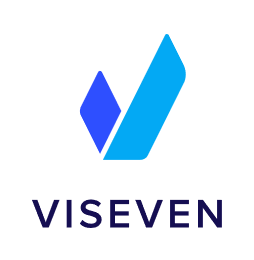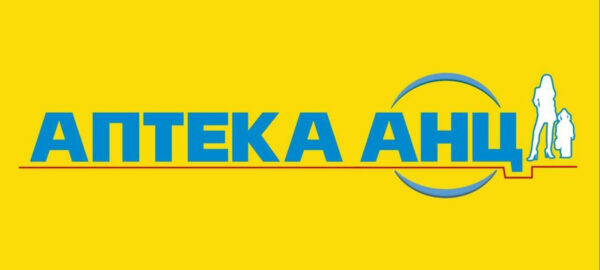
A script with a detailed description of the course, its structure, visualization, and content is an indispensable assistant for a developer. It gives a clear idea of the logic of the course and helps to catch flaws before financial investments are made in development.
How to write a competent script for an e-course? Where do I start and how do I end? Let’s figure this out.
Why is it important to write a script before developing an e-learning course?
 Olga Ivanenko – Head of the Sales Efficiency and Customer Service Center at UKRSIBBANK:
Olga Ivanenko – Head of the Sales Efficiency and Customer Service Center at UKRSIBBANK:
The course script is about the path between point A to point B, which you will guide the Learner through. It has a story, emotions and user steps – it is a thread on which you will string your learning bead design to then get a harmonious, interesting, valuable, and most importantly effective product.
Stages of script development:
Step 1: Describe the target audience of the future course
Describe the target audience of the future course: their age, experience, level of computer skills, hobbies. What kind of training they find interesting, what design they like best, and so on. It is important to make a course that will not alienate the audience.

Step 2: Describe the learning goals and objectives
Describe the training goals and objectives. Answer the questions: what will the employee learn after the training? What skills and knowledge will he/she acquire at the end of the training? How will they be useful in the workplace? Keep the answers to these questions in focus throughout the course.
Step 3: Choose the type of future course
Based on the goals and objectives of the training, choose the type of future course. E-learning specialists distinguish these types of courses: informational, training and motivational.
- The purpose of an informational course is to inform employees, to tell them how to use the acquired knowledge. Therefore, the emphasis is on the text and colorful design. The informational type is suitable for familiarizing employees with the work process or a new product and for creating introductory courses for trainees.
Read more: What does an ideal introductory course consist of?
- A training course aims to teach new skills. It has a minimum of theory – the emphasis is on cases, conversational simulators, and tests. Storytelling is important for such courses – you have to come up with a story, identify the main character and make up the plot.
- The goal of a motivational course is to encourage employees to change their approach to work or their attitude towards something. To involve employees as much as possible, we also recommend storytelling with a corporate hero in motivational courses.
Step 4: Gather Source Materials for the Course
Gather source materials for the course. Consider how best to present the practice and theory.
We recommend starting with practice. Practice is the best way to prove the value of learning to the students. A practical lesson plan will be a good basis, the “skeleton” of the course. After that, it remains to pick up theoretical materials that will help successfully complete practical assignments.
Do not forget about the additional material, which will help to go deeper into the subject of the course – articles from the Internet, videos, books, etc.
Step 5: Consider corporate requirements for course design
Consider the corporate requirements for the course design – color scheme, brand book, logo and other elements. Do not forget to write them in the script. Adhering to the style of the company you reinforce corporate values.
Step 6. Describe the technical requirements and limitations of the target audience
Describe the technical requirements and limitations of the target audience. It is important to specify the operating systems, browsers, bandwidth, availability of audio playback devices, screen resolutions. Whether the course is required to work from mobile devices and what screen resolutions need to be supported.
Additional features that are important to consider when designing – allowable course duration, ways to collect feedback, permission to download course materials, etc.
Step 7: Create a Course Concept
Make a concept of the course – a brief description of the idea and the storyline. We recommend the use of storytelling techniques.
Example of a concept: Training course “Conflict at the Cash Desk trainer”.
The course begins with theoretical material on service standards for cashiers and step-by-step instructions on how to identify the cause of conflict and reduce customer aggression. Then we move on to the training: getting to know the main character and diving into the conflict. A description of the conflict situation and a list of actions, from which you must choose the right one. If the employee chooses the wrong one, an explanation of why this choice is wrong will appear on the screen – an offer to go back and choose another answer. If the correct answer is chosen, the employee moves on to the next situation.
Step 8: Describe the visualization of the course
Describe the visualization of the course, what elements and characters are in it, their surroundings, the characters’ territory of action.
For example, a training course for pharmacists. The action takes place in a pharmacy, using the following elements of the template design: navigation through the slides with a green arrow, the main character in a white coat, showcases with medicines, text information appears on white sheets in the style of medical cards, etc.
Step 9. Describe the structure of the course by thematic modules
Describe the structure of the course by thematic modules. Each module of the e-course should bring students closer to the learning objective. A structured course looks logical and easier for staff to immerse themselves in.

The module is divided into three parts: the introduction, the main part, and the conclusion.
The introduction in the module is the main idea, it directly correlates with the title.

At the beginning you can spell out the goals of the module and introduce the user to the actors, describing the place of action.
The main part reveals the topic of the module – this is the main educational part, with examples of real cases. The most understandable and convenient form of delivering information – expanded information with video, text, infographics and explanatory illustrations is used.

Conclusion – summarizing the main ideas of the module. For better consolidation of knowledge in the conclusion you can insert a small test on the module.


Step 10. Describe the intermediate control points
Be sure to include milestones in the script that you can use to measure each participant’s progress through the course. For example, after each module or significant topics, add a short quiz for self-check and consolidation of knowledge.
Tip from the Collaborator: At the end of the course, it is helpful to add a feedback questionnaire. This will help you find out how clear and useful the course was for employees who did not understand the topic and who need the support of a mentor.
Step 11. Specify rewards
If you plan to use any rewards in the e-course – badges, certificates – write them in the script. Specify the conditions under which they are issued.

We’ve reviewed the basic steps of writing a script. You can use our example or add something of your own. The main thing is to clearly formulate the task and purpose of the training. And also don’t forget to keep your materials up to date. Develop courses that will be useful to your employees.
And finally, remember the main rule: it is much easier to rewrite the script than to remake a ready-made e-course. 🙂



































